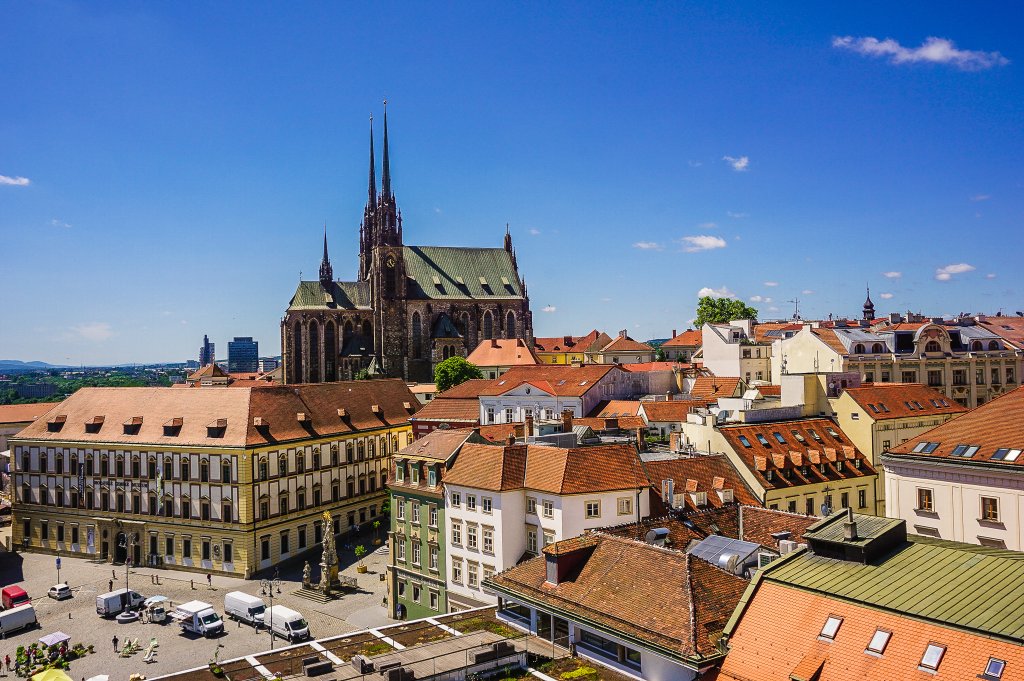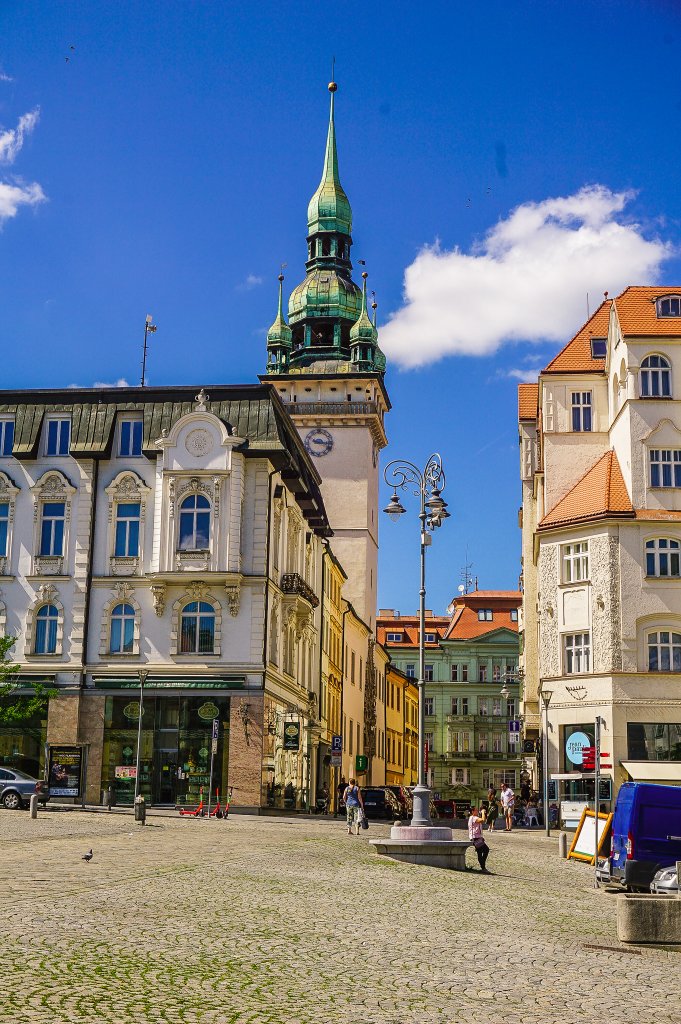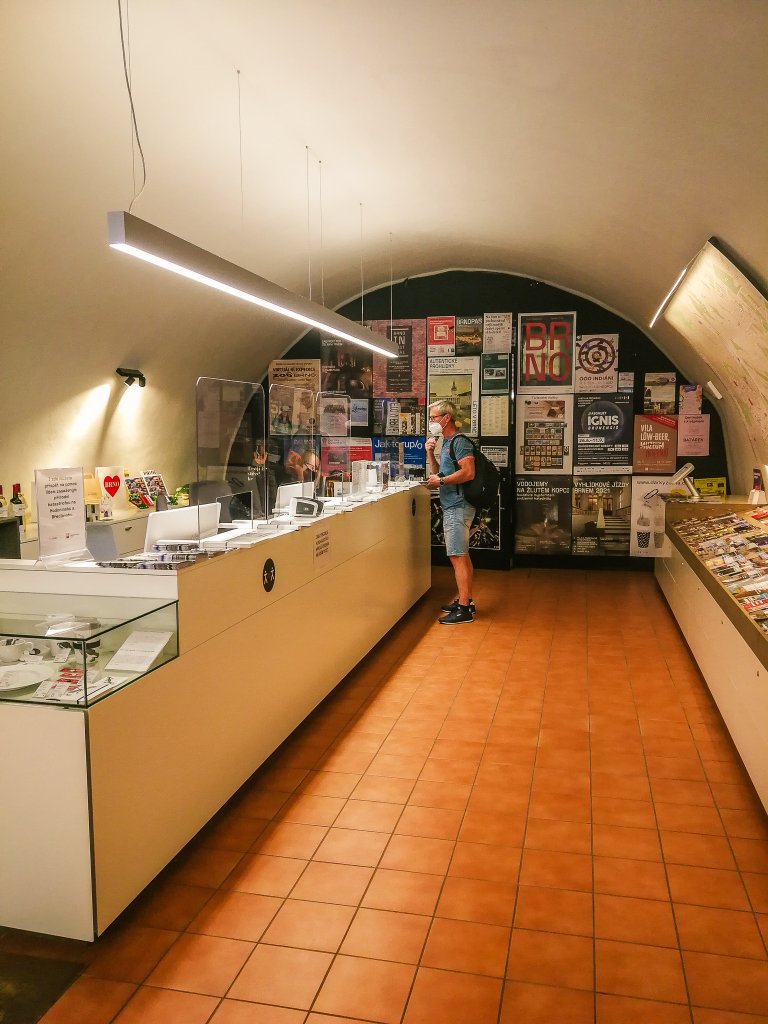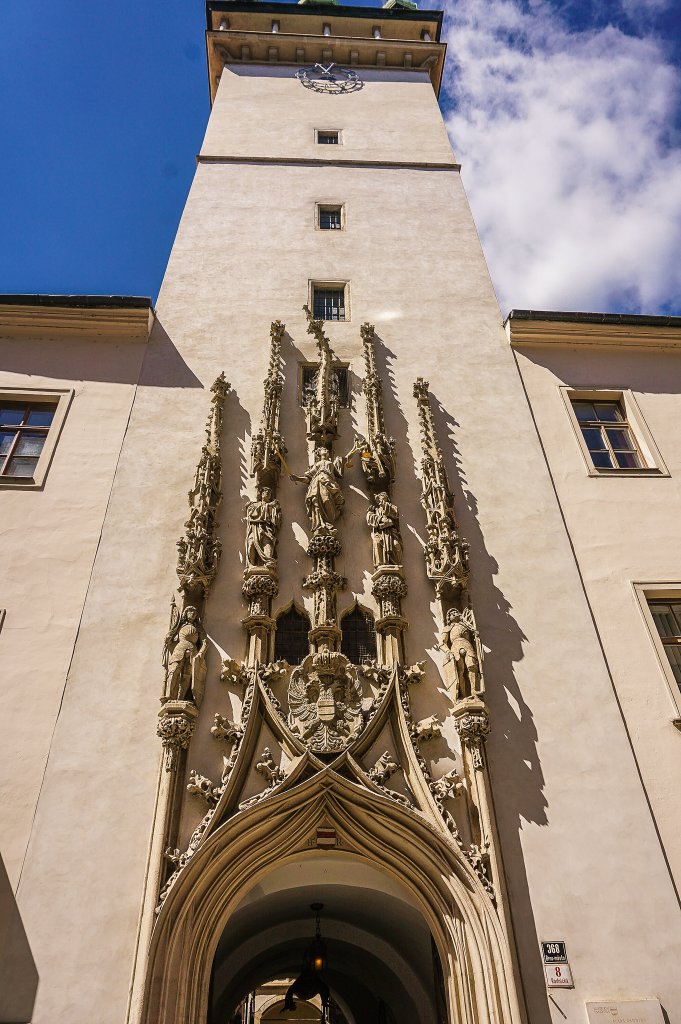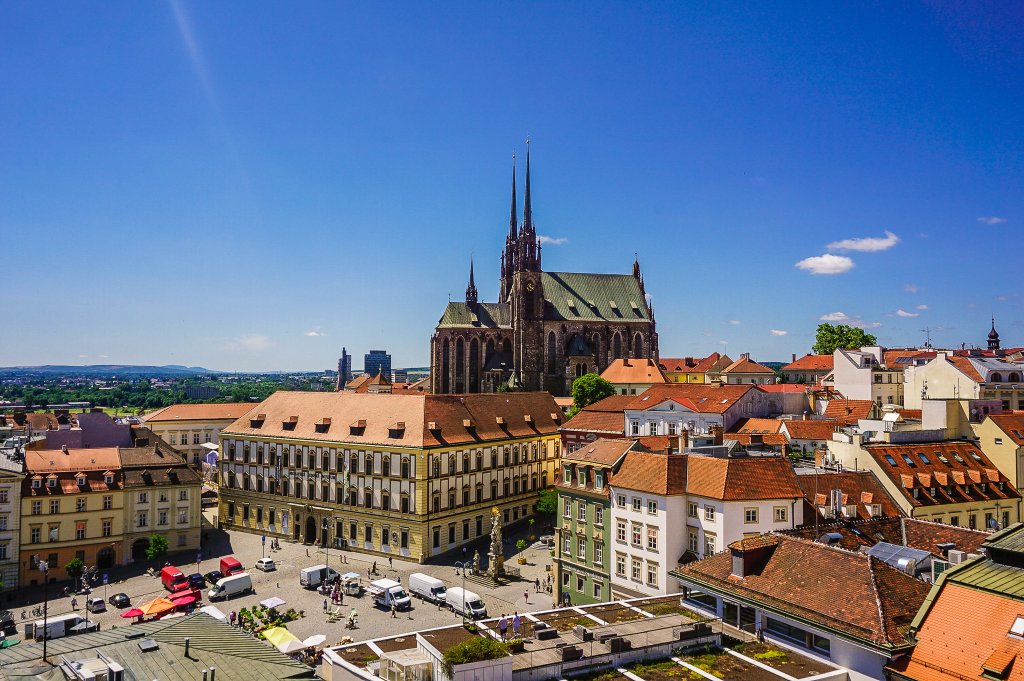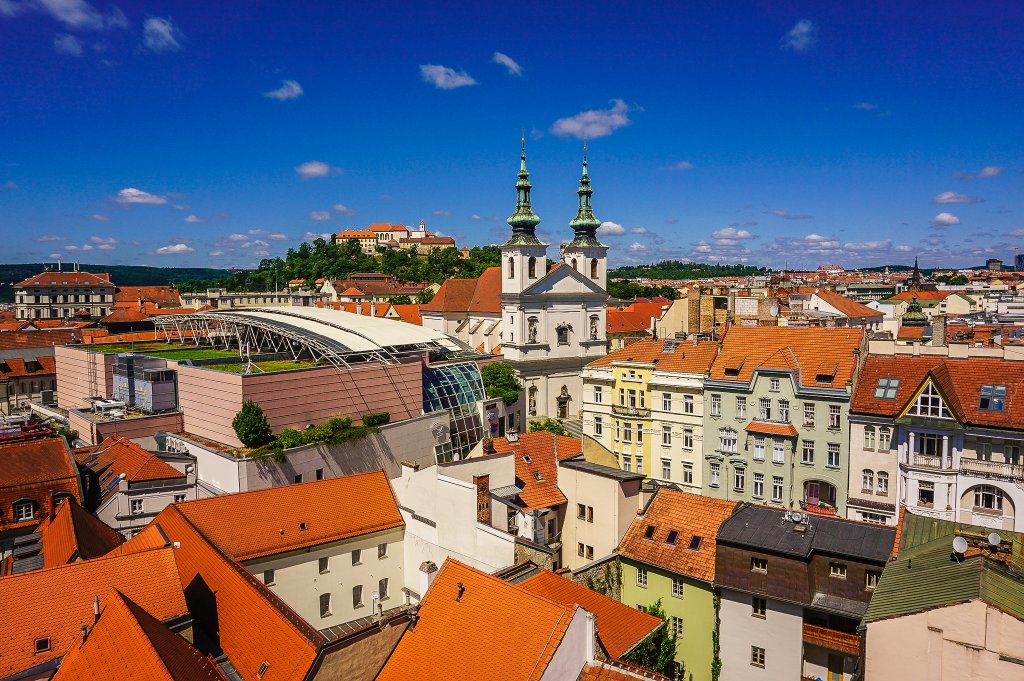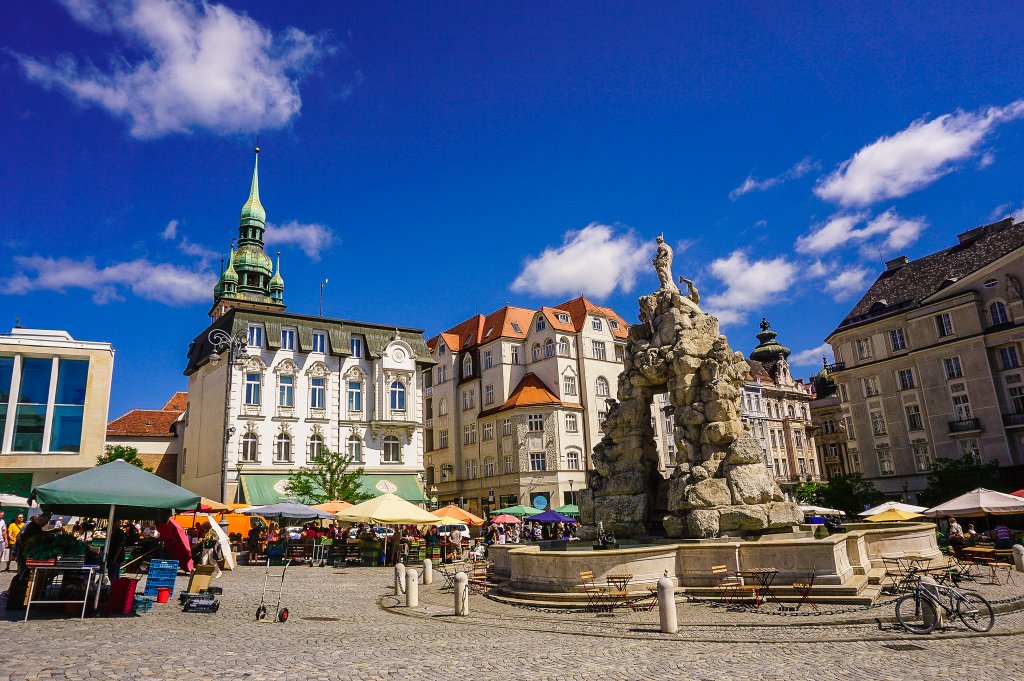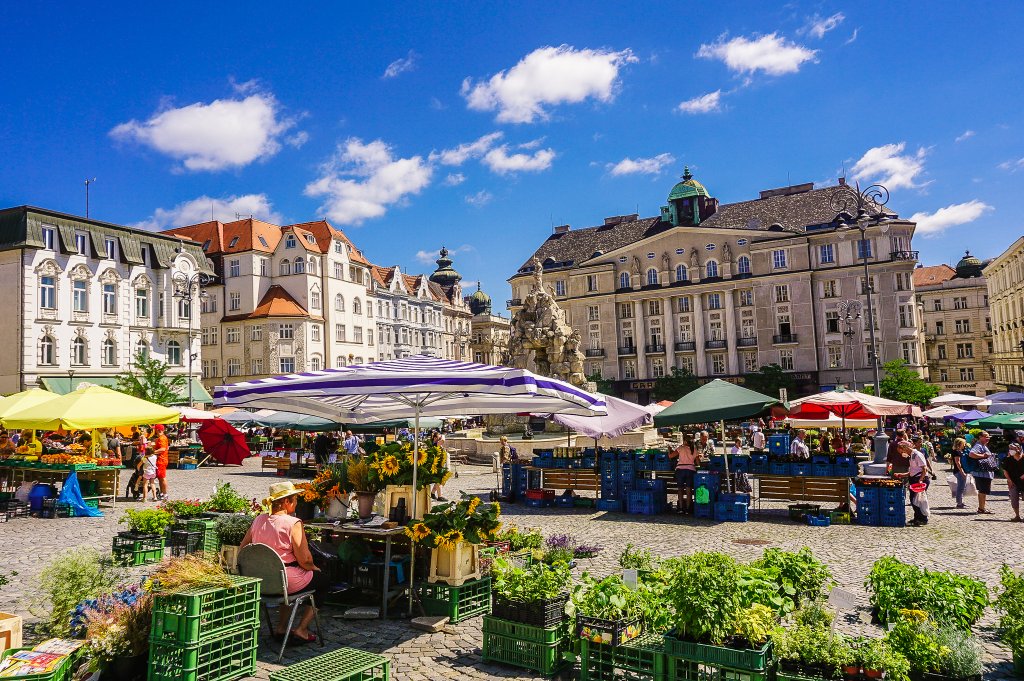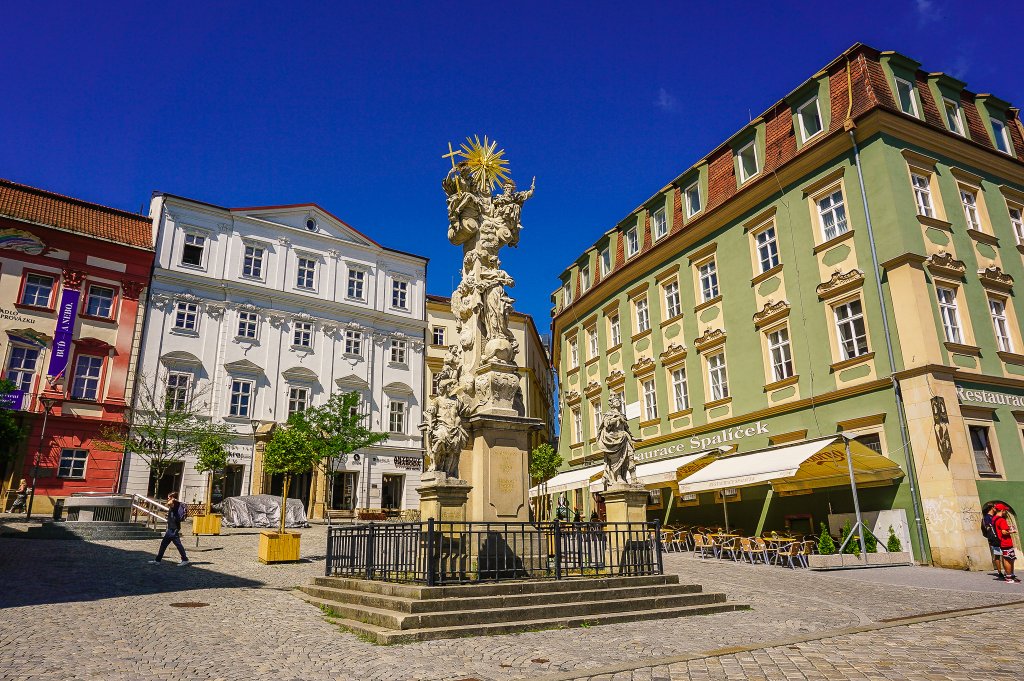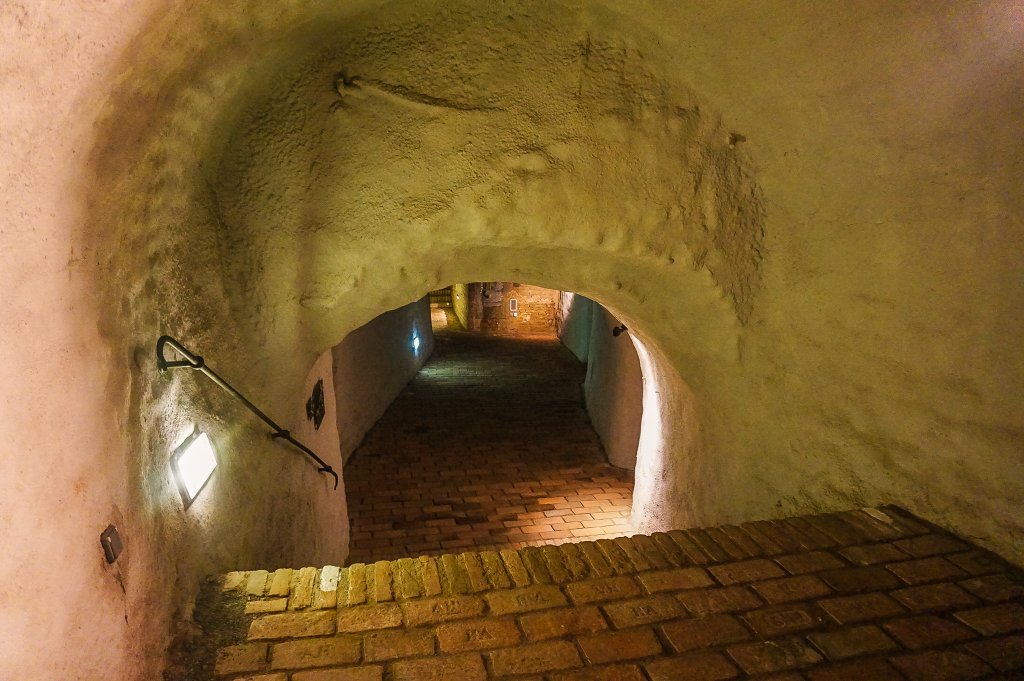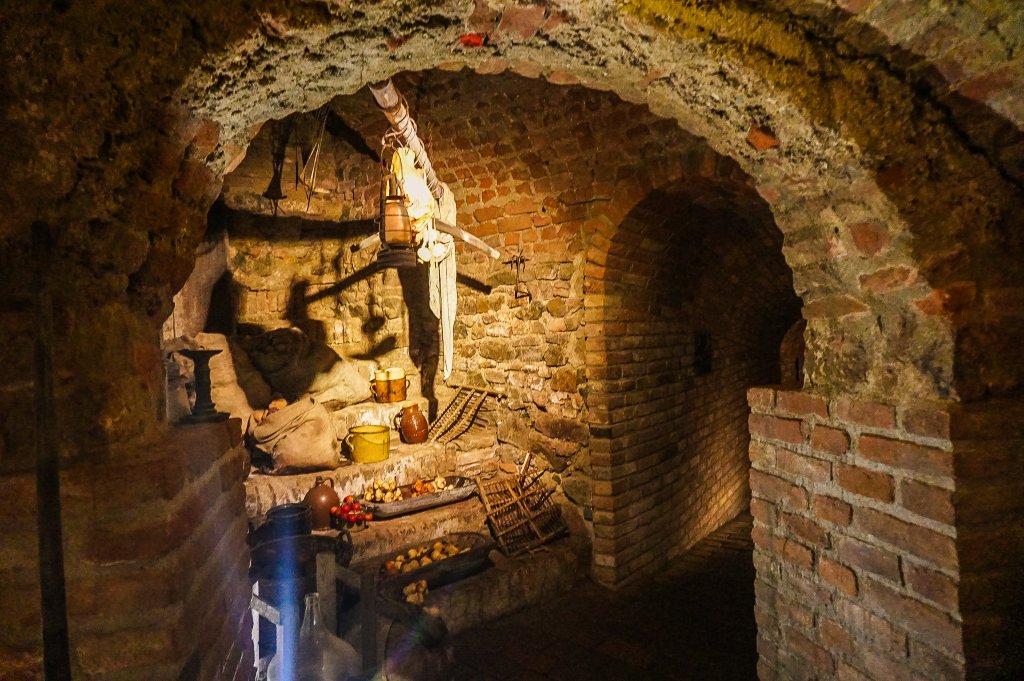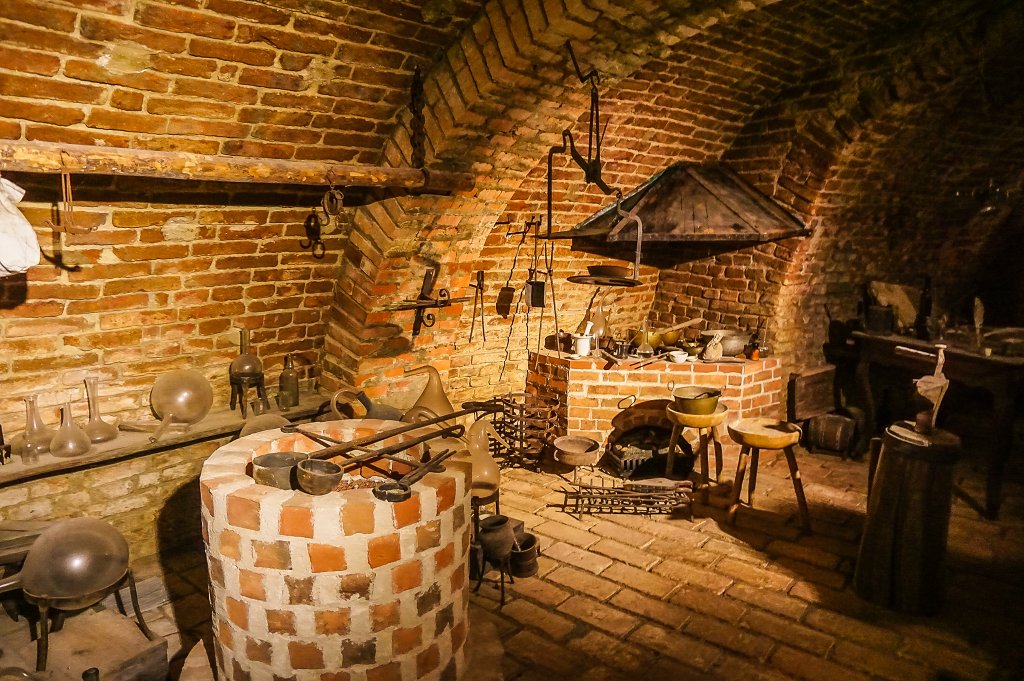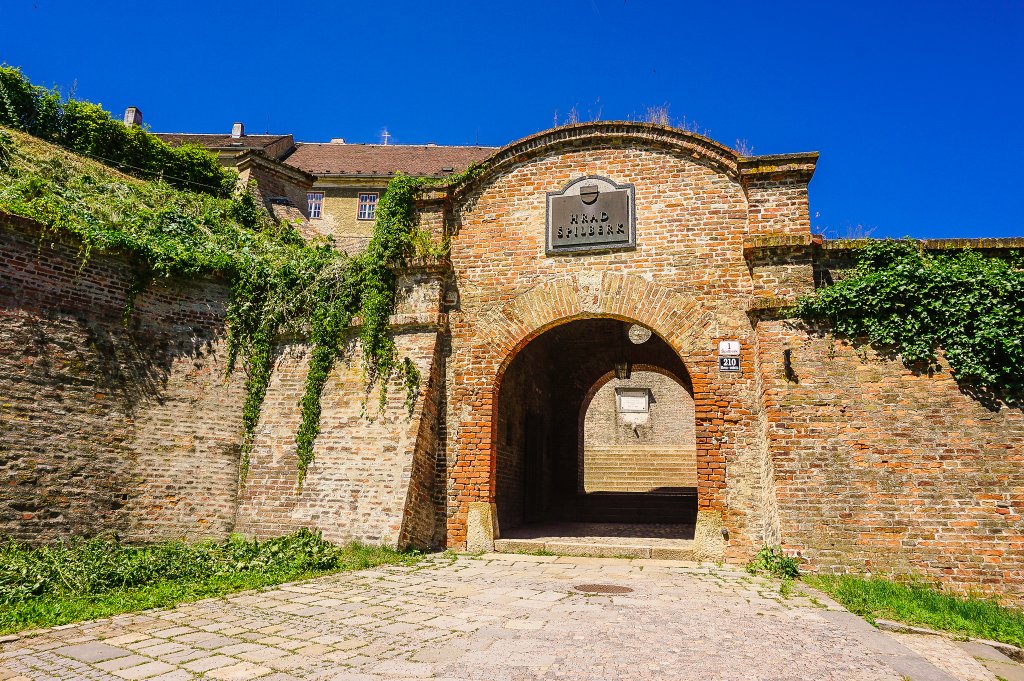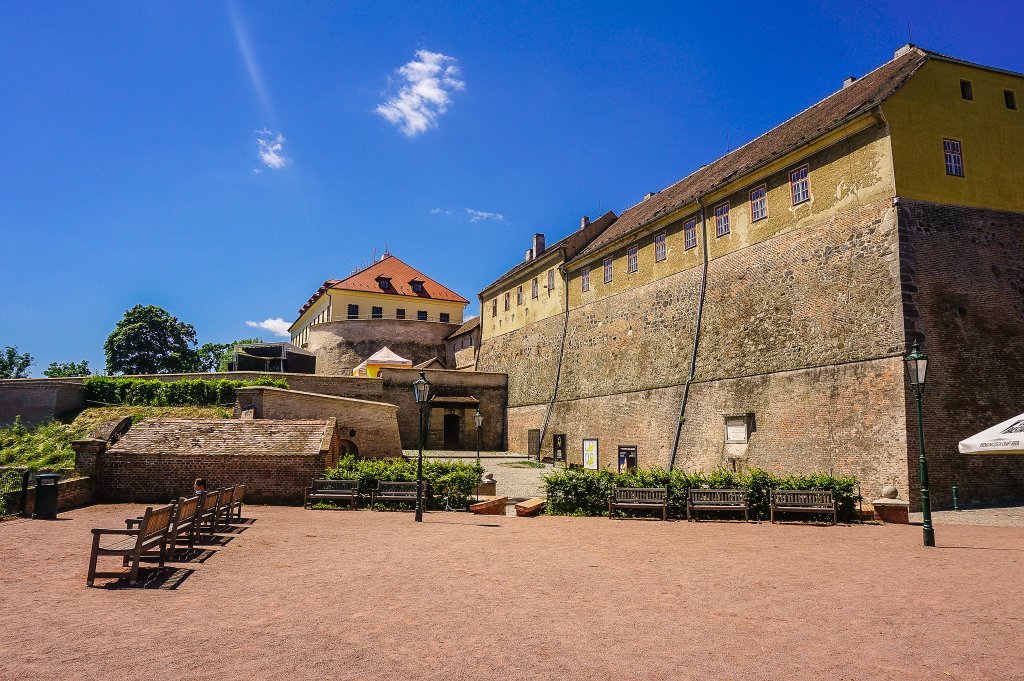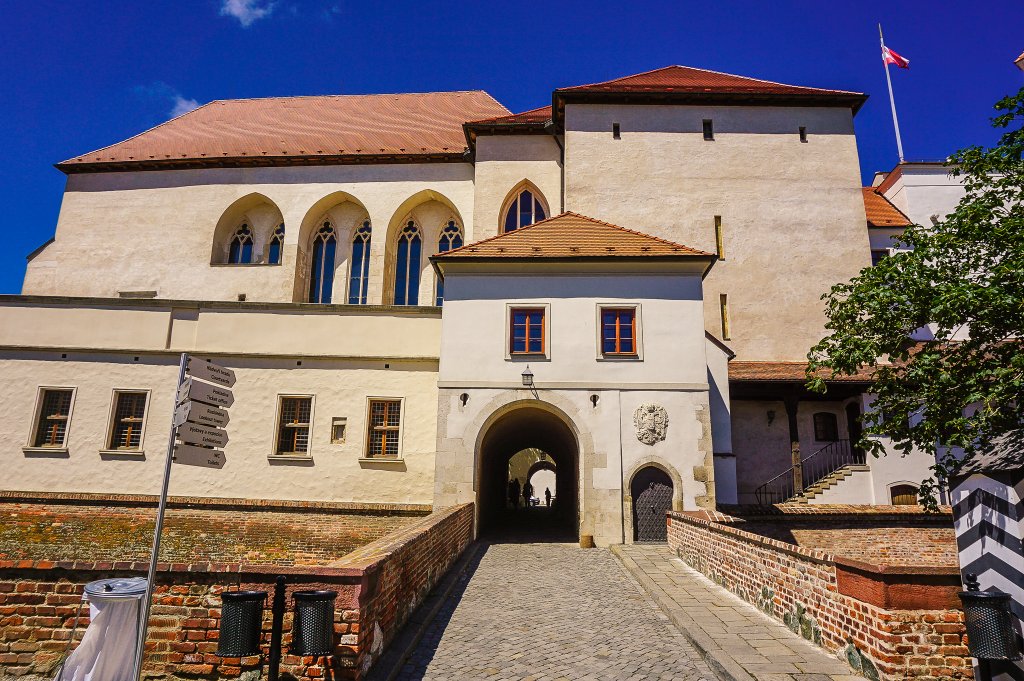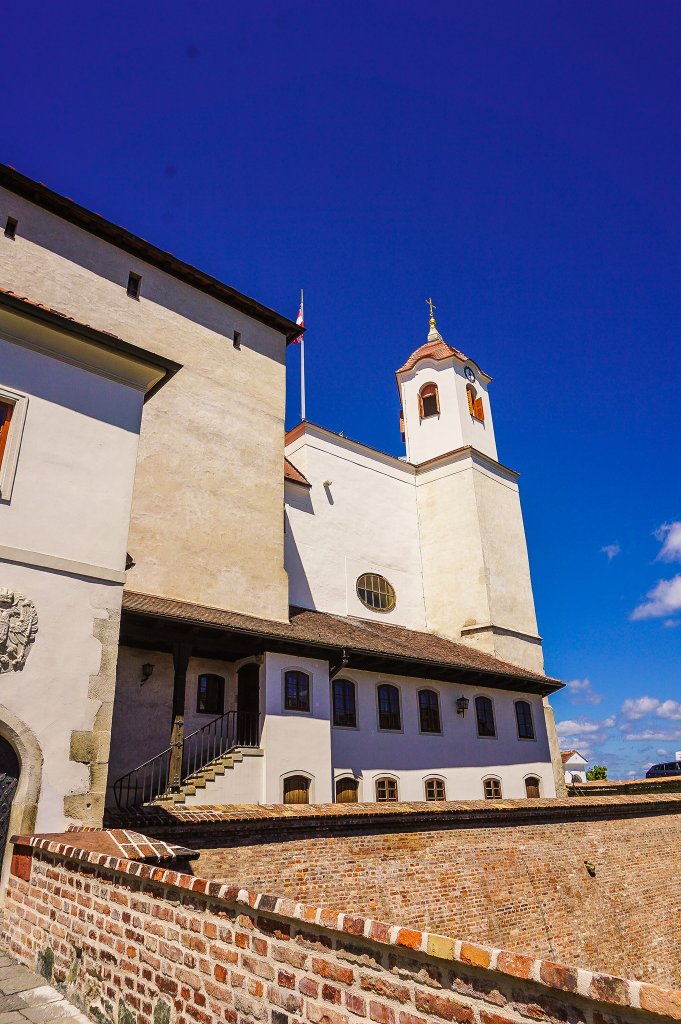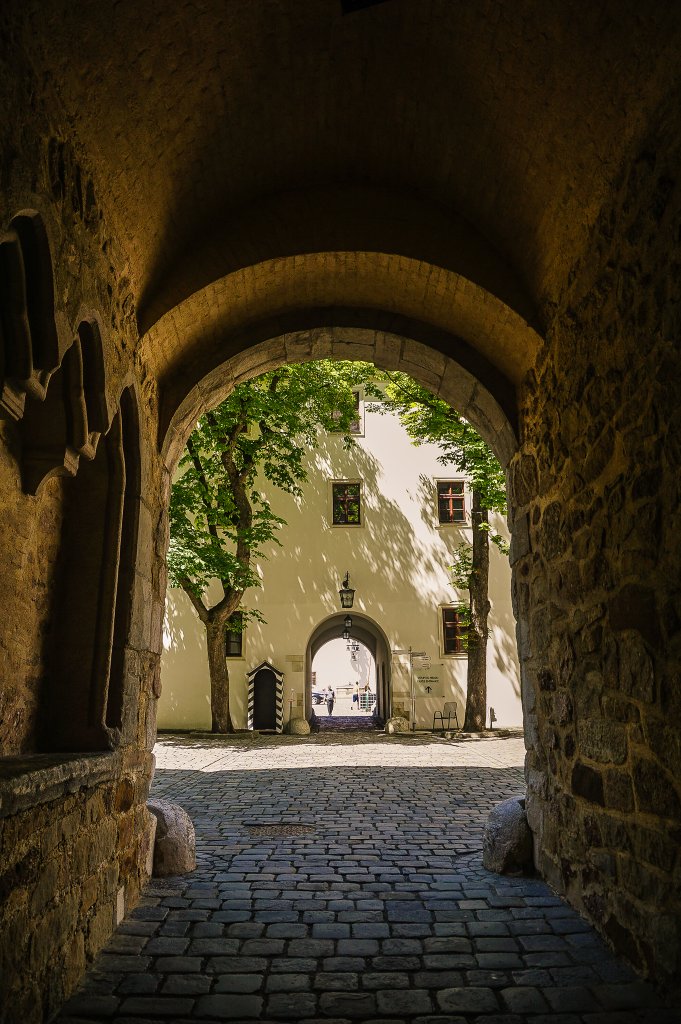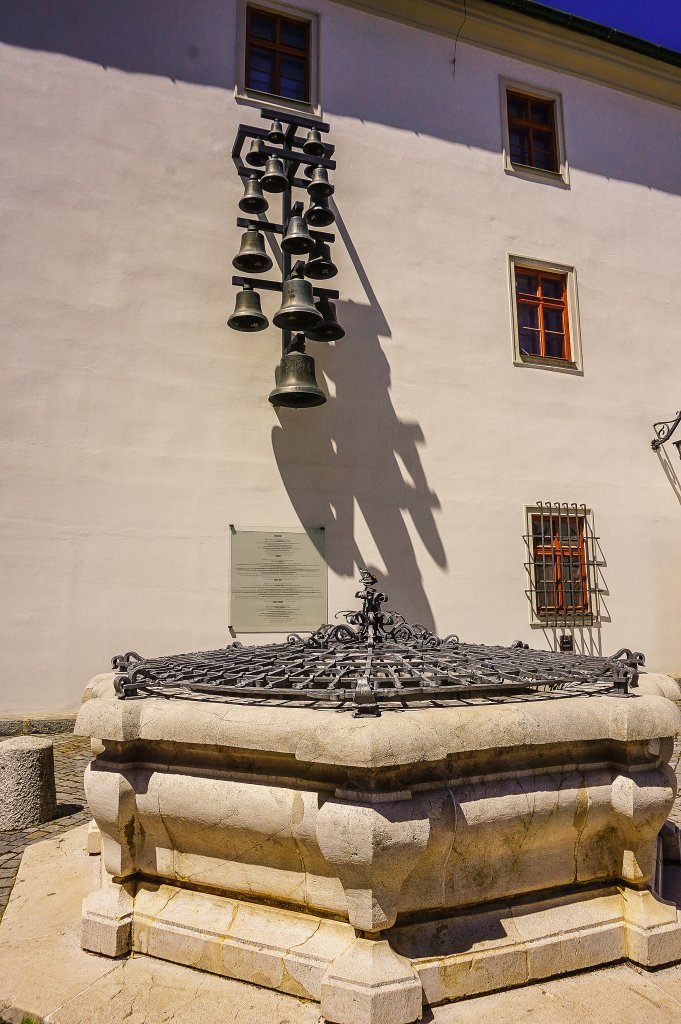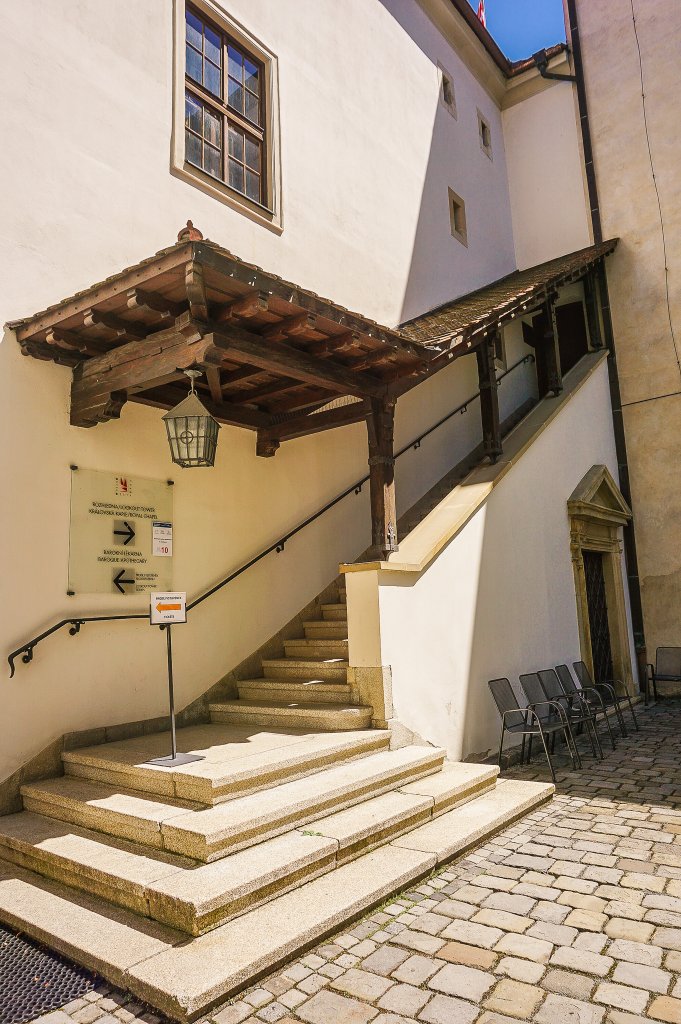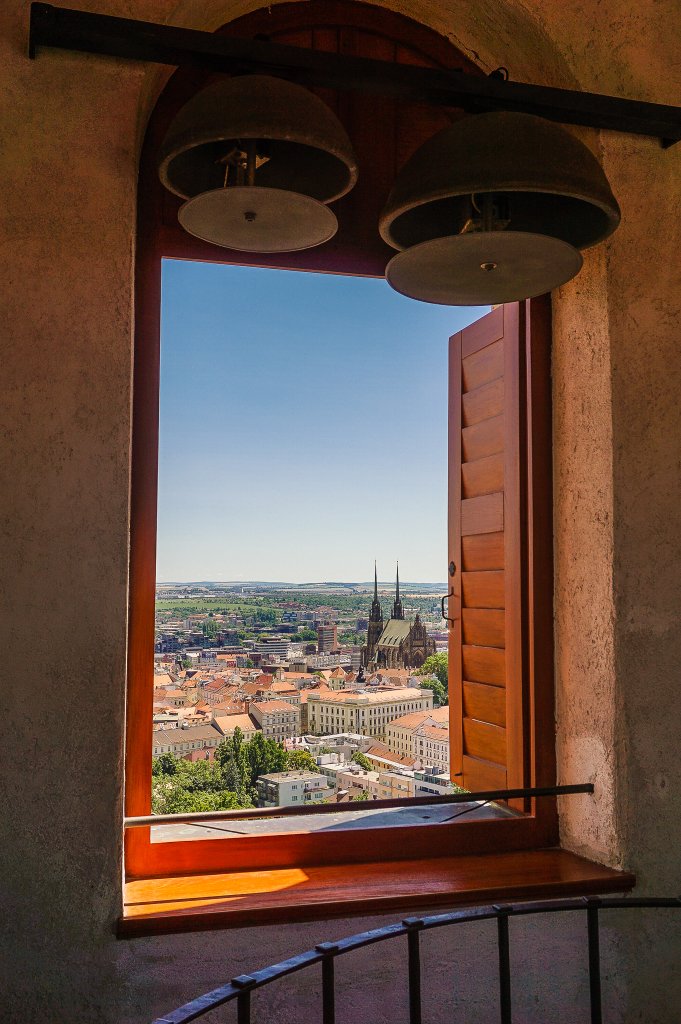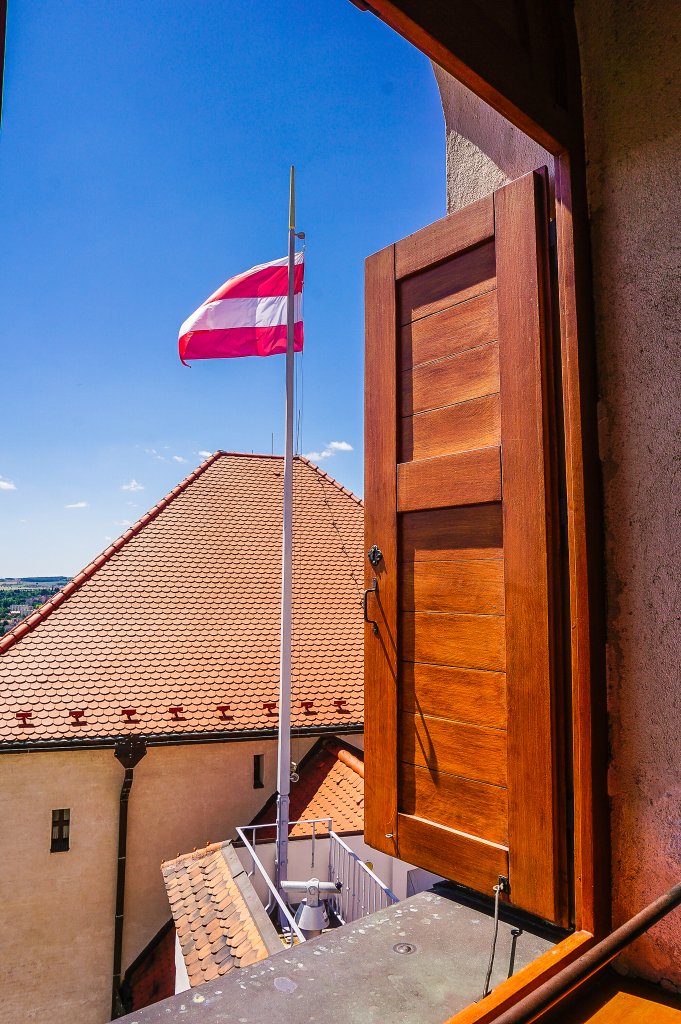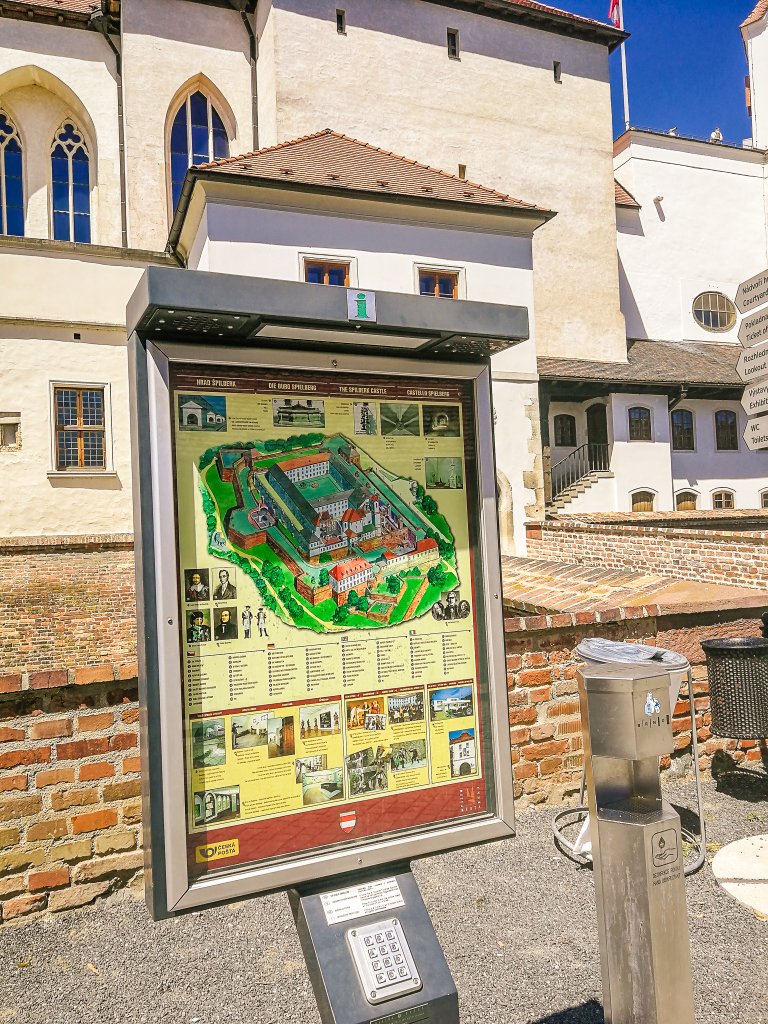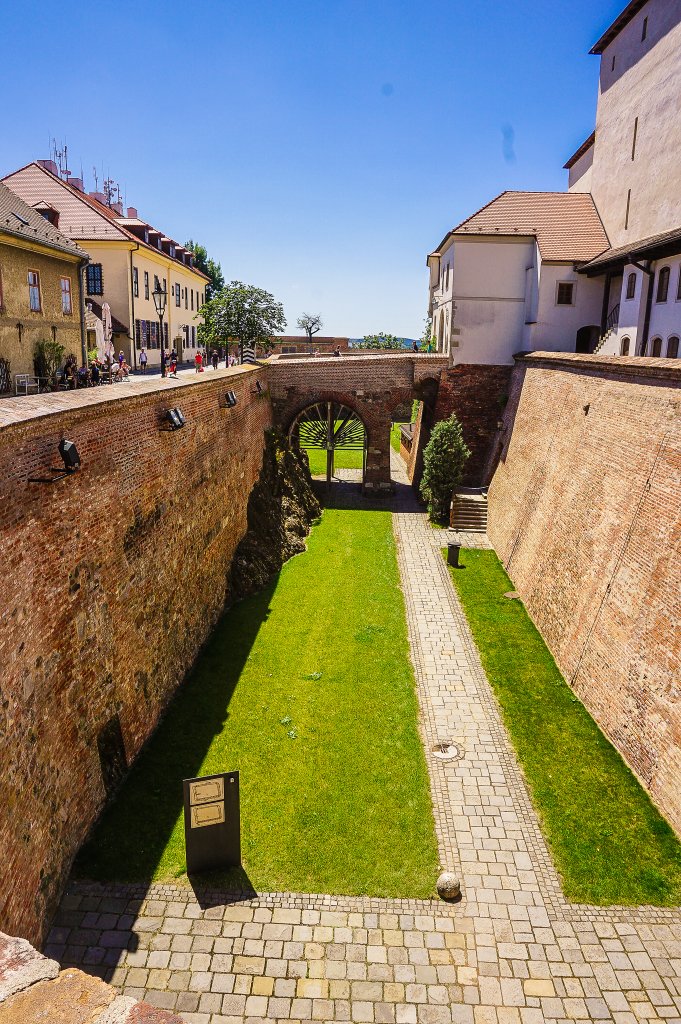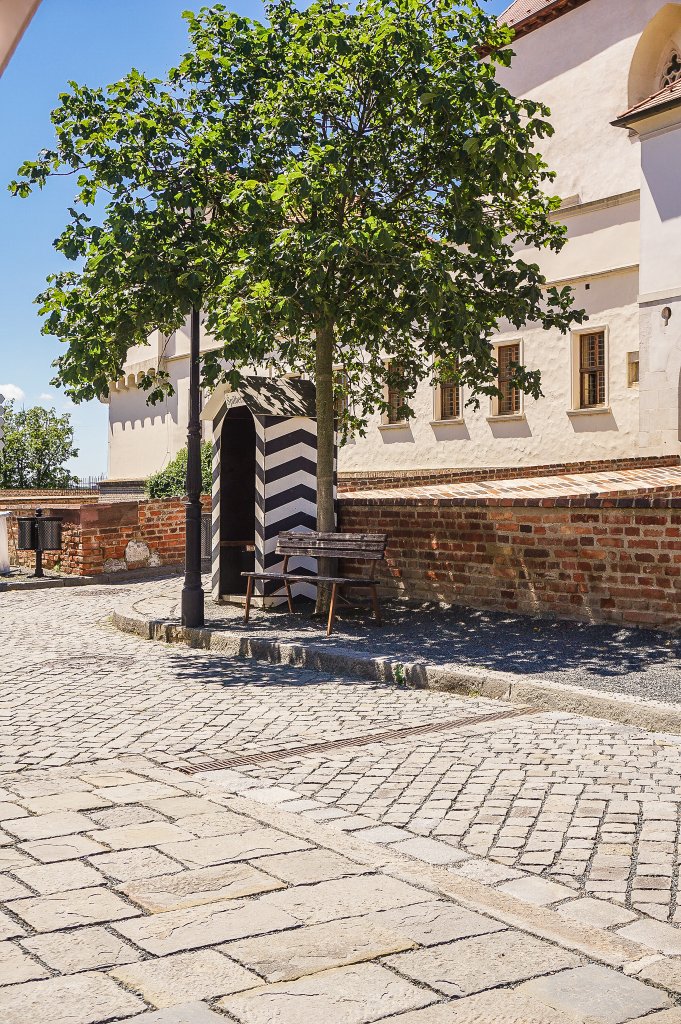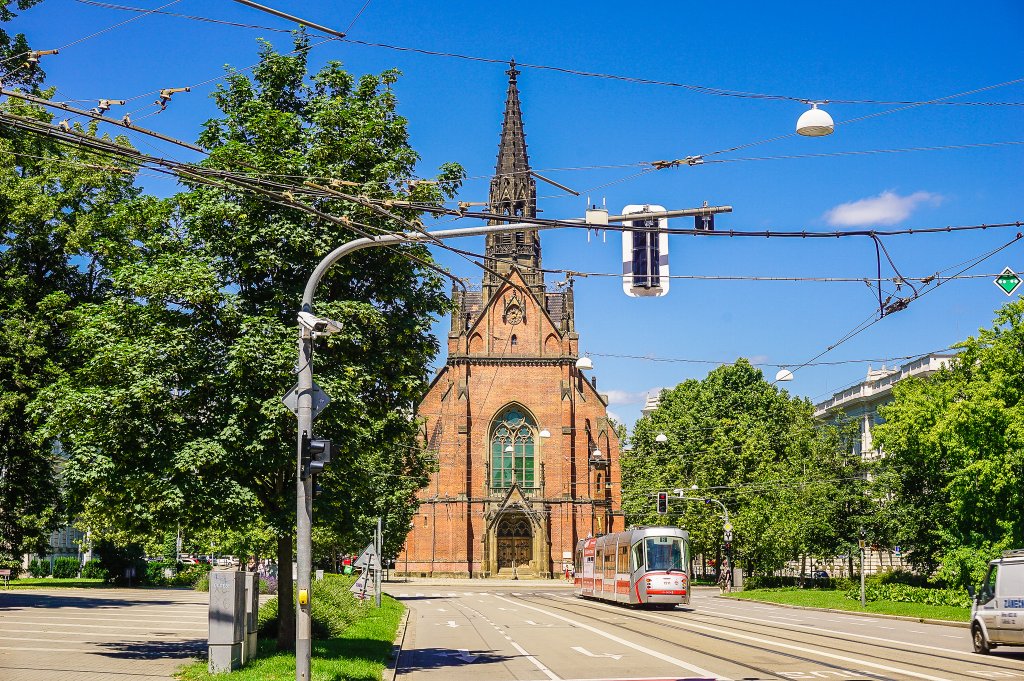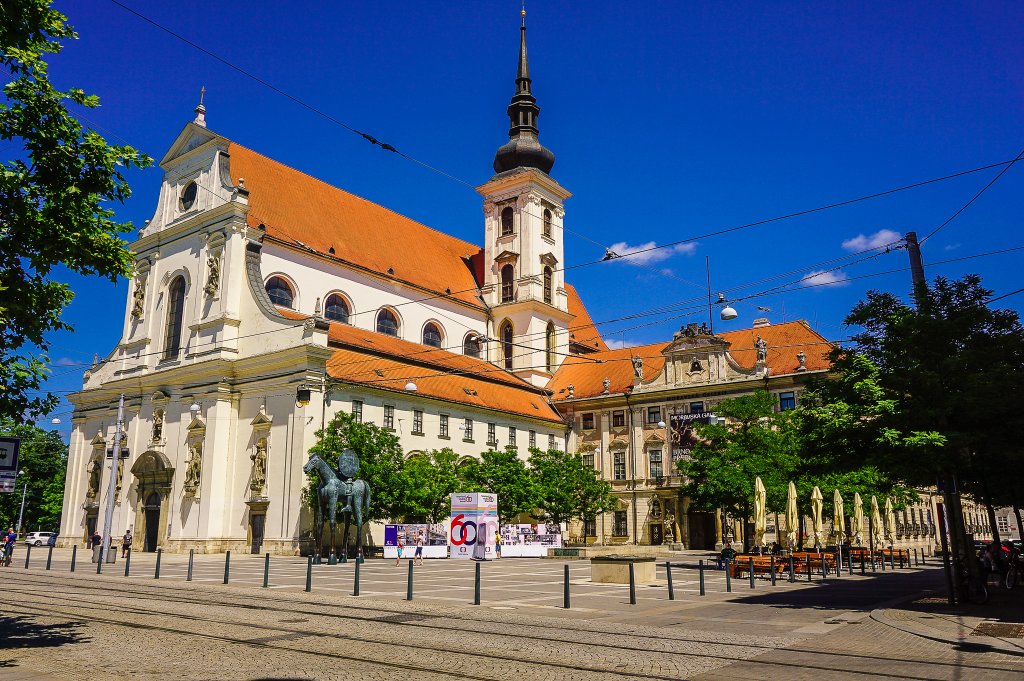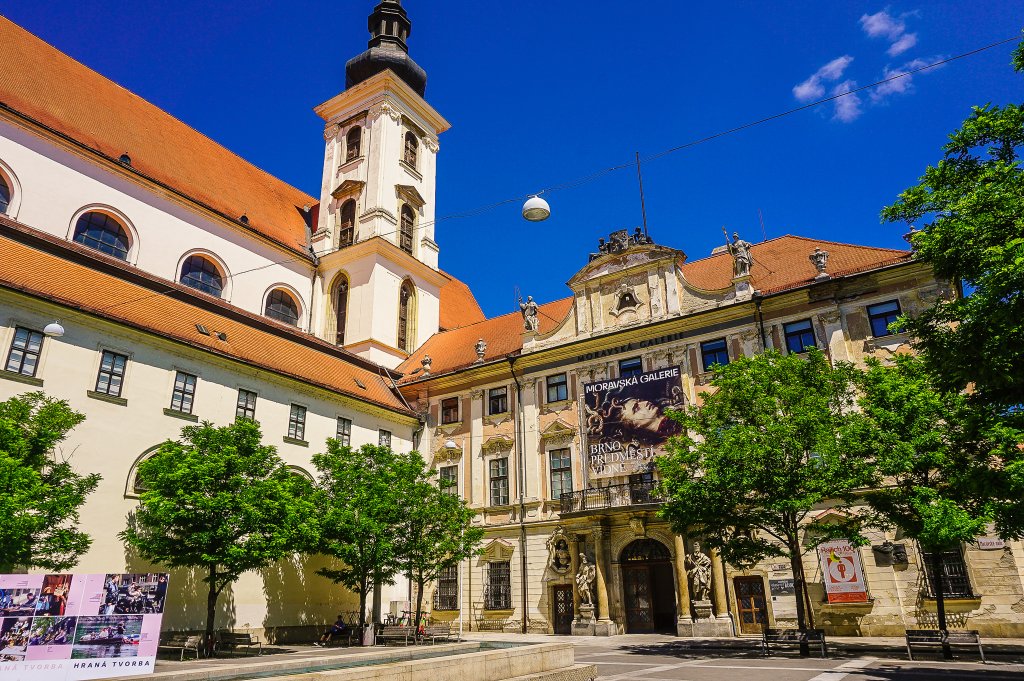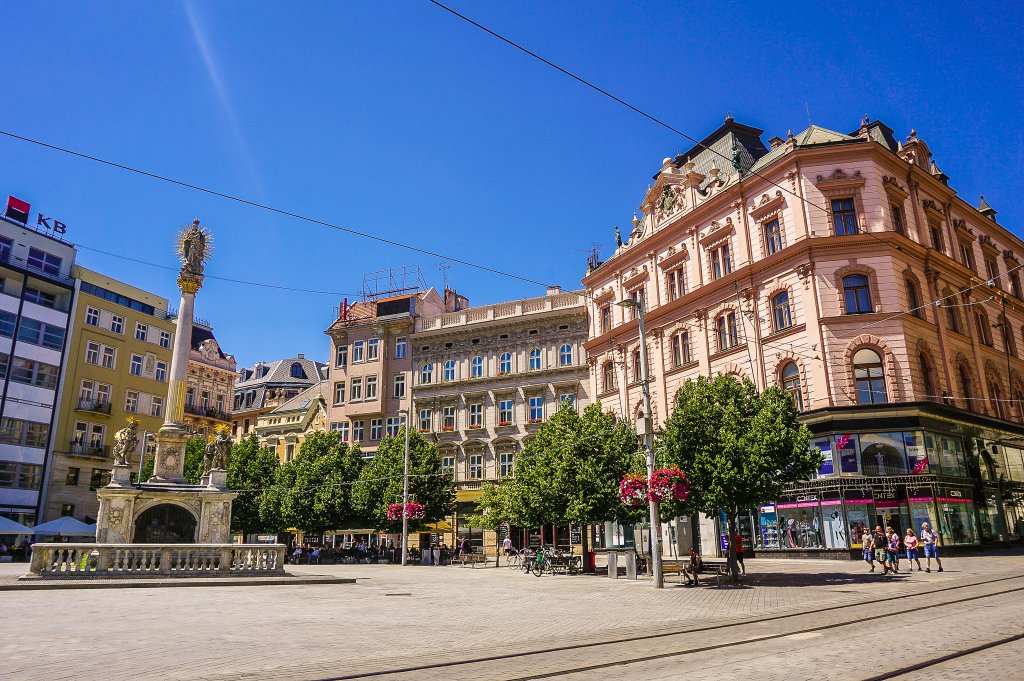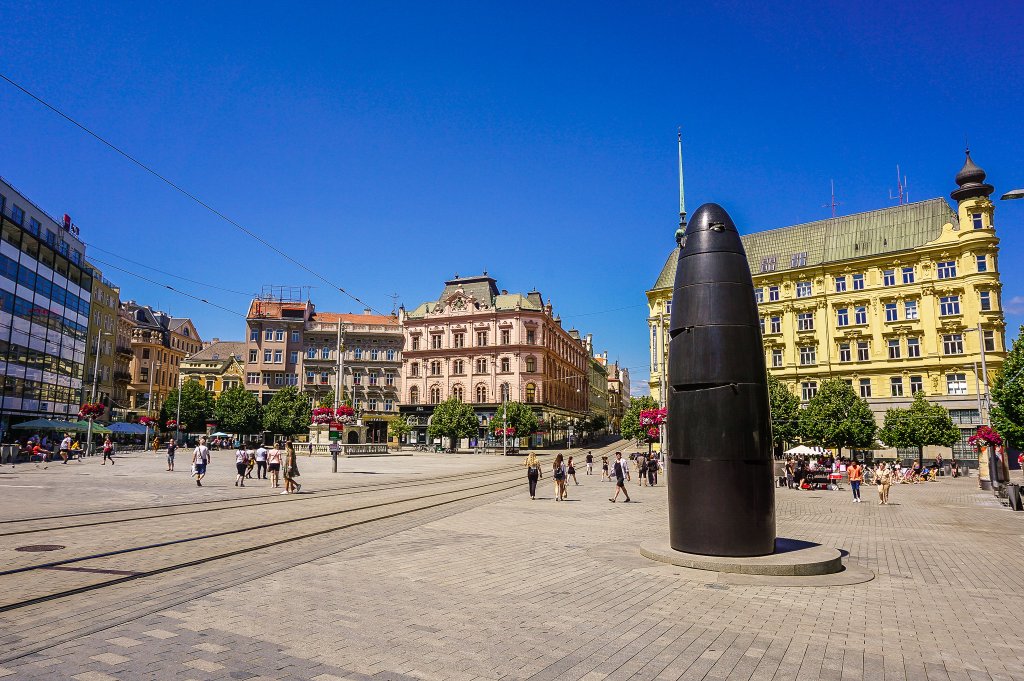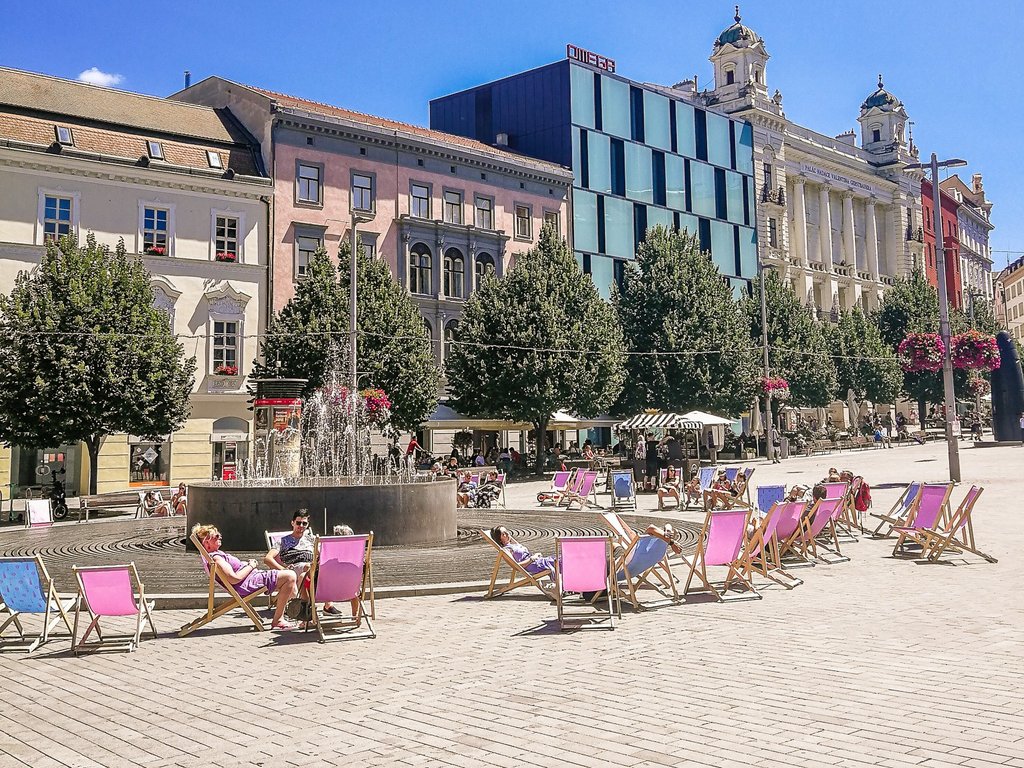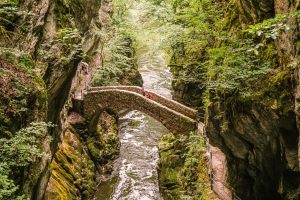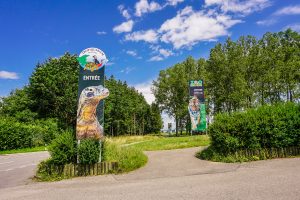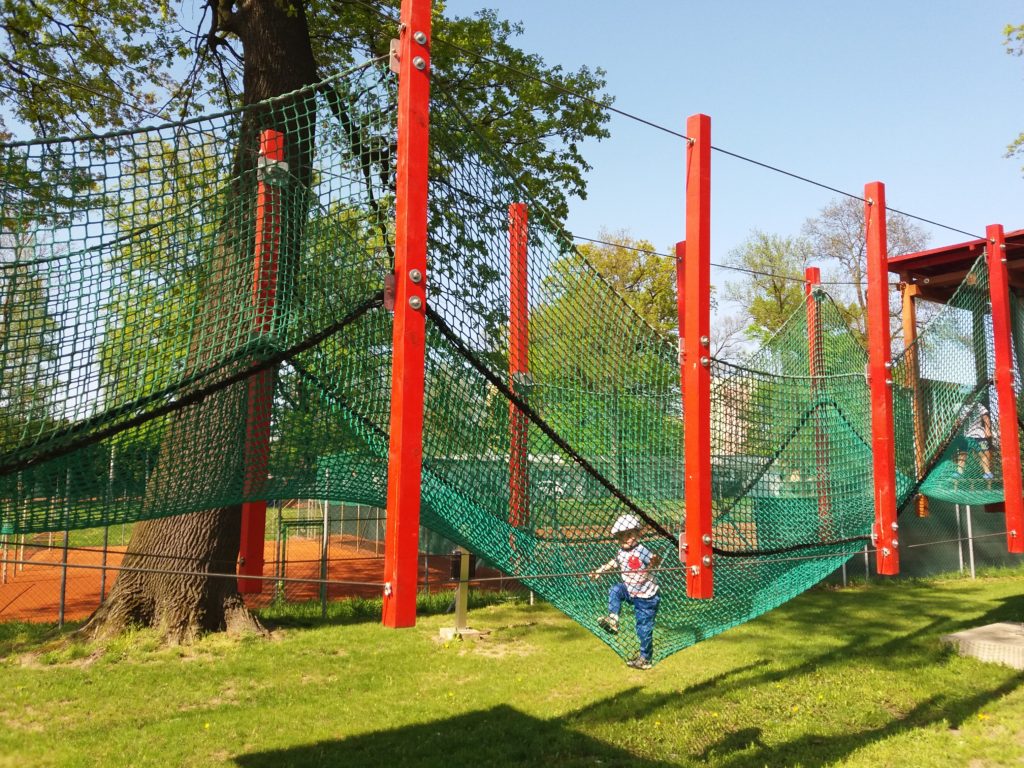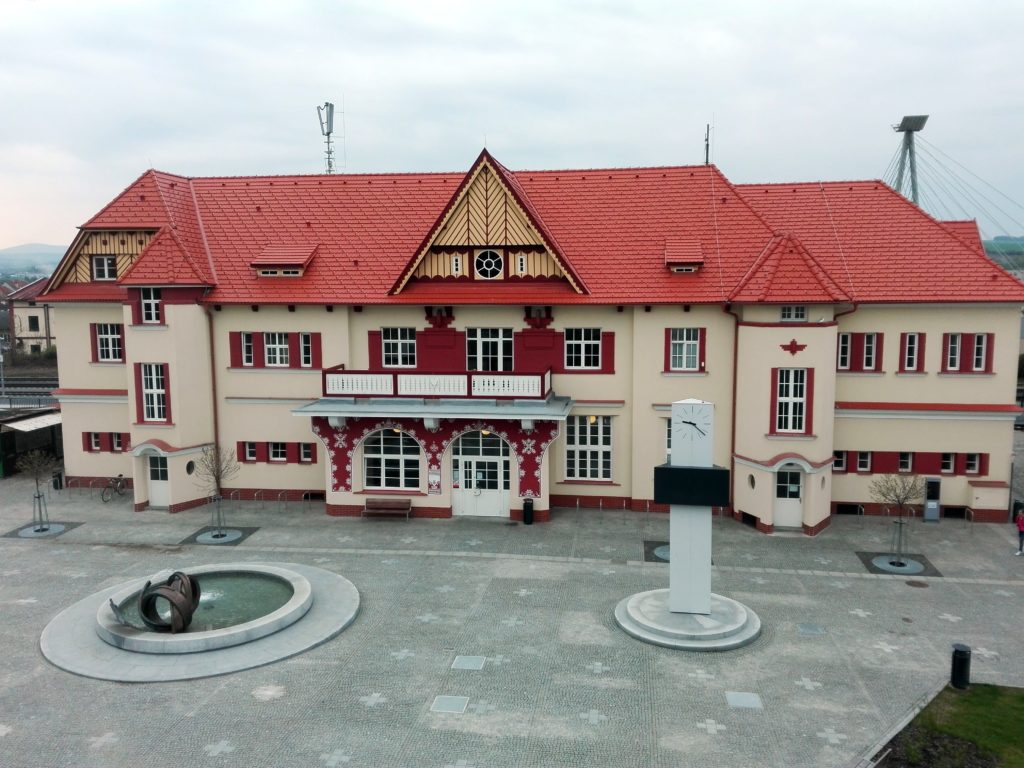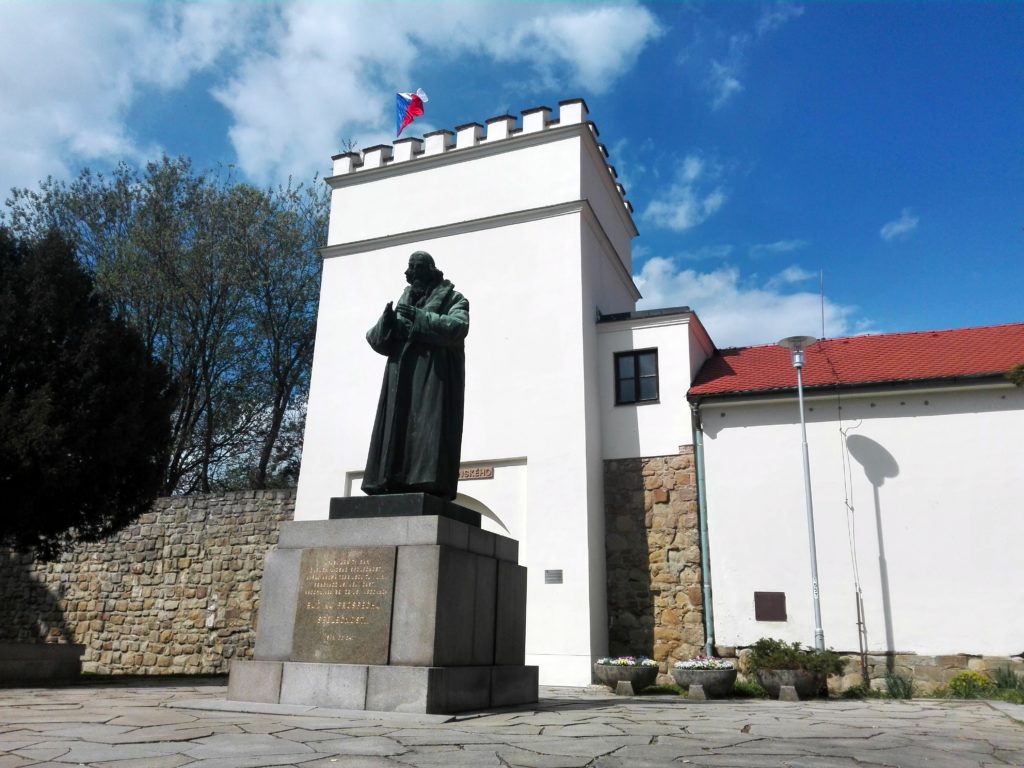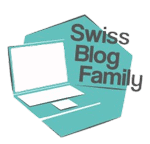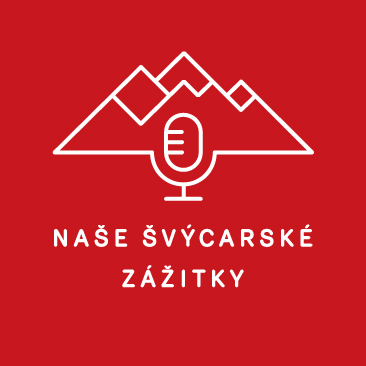I would say that Brno is a kind of tourist “Cinderella” – while travel agencies used to compete with each other to find the best Prague – Karlštejn – Český Krumlov and Karlovy Vary tour, there was no time for the second largest Czech city in the itinerary. And I think this is a great pity because Brno definitely has a lot to offer to its visitors. We decided to get to know it mainly from a bird’s eye view, so in this guide, you will find tips on when to climb the tower and where you can get to know it from below – Brno prides itself on the exceptional medieval passages under the city.
How to get there and where to park
The advantage of Brno is that both the train and bus stations are located almost in the city center. Brno is one of the train hubs in Moravia and it is not difficult to get here by train from the surrounding area. The same goes for buses. It’s just a bit further from Prague – 3 hours by train, 2,5 hours by bus (if you are lucky and there are no traffic jams on D1).
If you come here by car, you can find a map of parking zones at this link. There is limited access directly into the historic center and only residents are allowed. The rule of thumb is that the closer you are to the center, the more expensive the parking. The first hour of parking is free for visitors, and parking fees are paid either at a meter, online, via SMS, or mobile app. We parked in the Galerie Vaňkovka shopping center, which is about a 10-minute walk to the center.
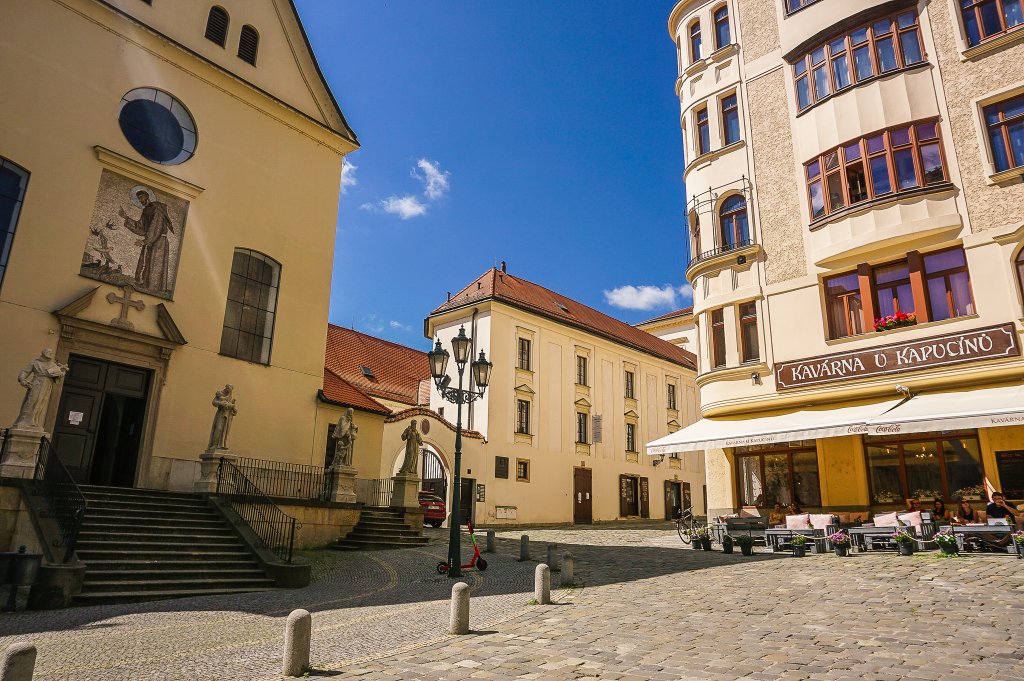
Brnopas
With the Brnopass tourist card, you will get interesting discounts and free admission to Brno attractions. It also provides you with free travel on public transport. You can buy a Brnopass for 1 – 3 days for 290 or 490 CZK. You can also get a Brno Pass for just CZK 1 if you stay for at least one night in one of our partner hotels in Brno. You can find a list of them here.
Starting point – Old Town Hall
The starting point of your visit to Brno should be the Old Town Hall (Radnická 8, Brno – střed). And not only because it is the oldest secular building in Brno (from before the middle of the 13th century) and its entrance is framed by a beautiful Gothic portal by sculptor Anton Pilgram. But there are 3 other reasons to visit it:
1. there is a tourist information office
In addition to the helpful staff, there are free brochures and maps in several languages to help you explore the city. And you can also buy tickets for all the main attractions and bookings for guided tours here.
2. you will get acquainted with Brno legends
Already in the passage in front of the entrance to the tourist information office, you can see two objects to which two of Brno’s most famous legends are linked: a crocodile, also called the Brno dragon, and a wagon wheel. If you haven’t heard the stories, know that the “dragon” hanging from the ceiling is actually an alligator, which was given to the city by Archduke Matthias in 1608. What about the wheel? This legend is based on a true story. In 1636, a master wheelwright from Lednice and his friends bet 12 thalers that he could cut down a tree, make a wheel out of it, and roll it to Brno the same day. According to local legends, he actually succeeded. The townspeople, however, refused to believe that one man could accomplish this feat and concluded that the wheelwright must have been helped by the devil. Therefore, they never bought anything from him ever again.
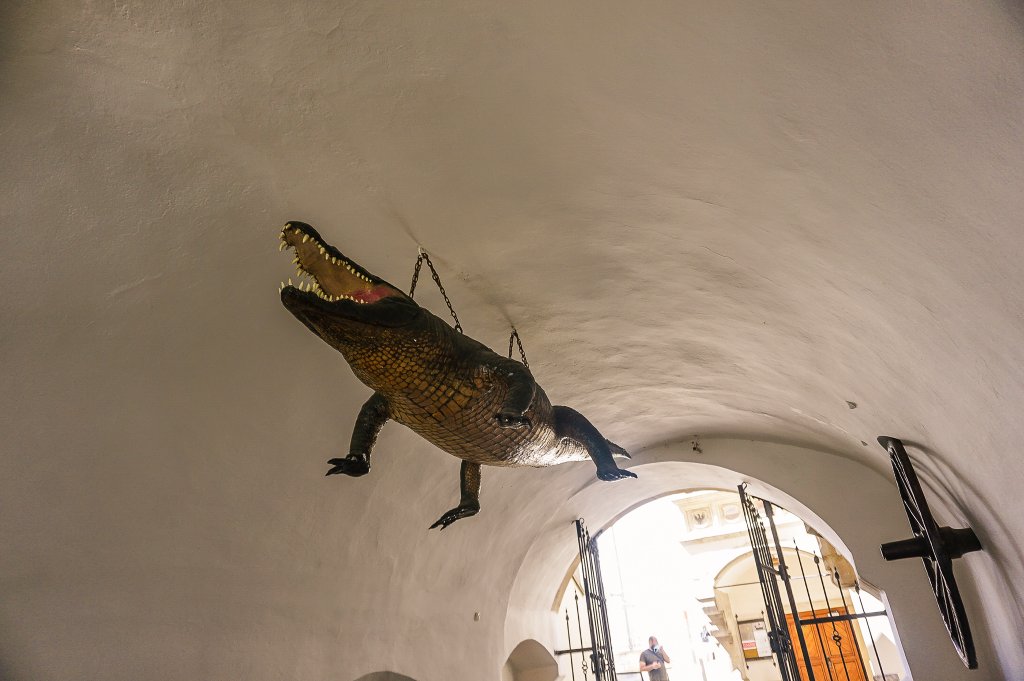
3. you can climb the tower of the town hall
You can climb the 63-meter high tower and enjoy an impressive view of Brno from the top. Along the way, as you climb the 173 steps, you will learn more about the aforementioned Anton Pilgram and the construction of the tower (by the way: did you notice that the middle pinnacle on the portal is twisted?). Anyway, from the tower’s viewing gallery you can get an idea of the city size and the location of the main attractions. That’s why I recommend that you start your tour of Brno here.
The Cabbage Market (Zelný trh)
If you went to the Old Town Hall from the train or bus station, you must have crossed the Cabbage Market Square. Almost every day there are markets here, which date back to the 13th century. Stalls selling home-grown fruit and vegetables are arranged around the dominant feature of the square – the monumental Baroque Parnas fountain by Austrian sculptor Johann Bernhard Fischer of Erlach. At the top of the square is a block of four Gothic and Renaissance houses known as Malý Špalíček, and in front of it is a Baroque sculpture of the Holy Trinity. To the left of it is the Dietrichstein Palace, which houses the Moravian Museum.
Labyrinth underneath Zelný trh
At the bottom of the square is the entrance to the Labyrinth under the Cabbage Market. Brno boasts a unique complex of medieval underground passages and cellars. In addition to the Labyrinth under the Green Market, which we visited, you can visit, for example, the ossuary at St. James, where the remains of more than fifty thousand bodies were found, or the 10-Z Bunker, which was built during the Nazi era as a shelter from the American and Soviet bombing of Brno. In addition to a guided tour of the Labyrinth (admission 160 CZK adults, children under 6 years free), you can also play an exit game that takes you to places where the average visitor would not go on a tour.
Špilberk castle
Another place with magnificent views of Brno (and which can be seen almost everywhere in Brno) is the 13th-century castle complex, which was converted into a military fortress in the 17th and 18th centuries and then became a prison for the worst criminals and political prisoners of the Habsburg monarchy. Špilberk Castle is not the type of medieval castle where you will be guided through rooms full of antique furniture and paintings of famous castle owners. Instead, you can buy tickets to different parts of the castle (or one full ticket for 350 CZK).
You can go on a tour of the casemates, a system of long dark corridors that were created at the time when Špilberk was being turned into a fortress. The corridors originally served as a shelter for troops during the siege, but later became famous as one of the most severe prisons in Europe. You can also head to the underground Temple of Stone in the restored water towers, where you can admire a collection of stone and stone carving artifacts. We opted to climb the castle’s lookout tower.
If you would still like to learn more about the history of the castle, there is a useful button map in several languages. In the meantime, your children can enjoy ice cream or homemade lemonade in the Babinský bistro. Or take pictures in the guard booths 🙂
Moravian Square
From Špilberk we crossed the Solniční Street to Moravské náměstí. On the way, we managed to see the Evangelical Church of Jan Amos Komenský on Komenský Square, known as the “Red Church”. In addition to the Church of St. Thomas, Moravian Square is dominated by the majestic building of the Governor’s Palace, which houses the Moravian Gallery. And you will also find here the statue of Margrave Josht Luxemburg – the eight-meter bronze statue of a knight on horseback is an allegory of courage.
Time machine on Liberty Square (náměstí Svobody)
We crossed Běhounská Street and Jakubské náměstí (yes, you can visit the aforementioned ossuary here, or you can also climb the tower of the Church of St. James) and reached Liberty Square. This is the imaginary center of Brno. Here you will find three interesting elements – the Baroque Plague (Marian) Column, the bronze fountain with the verses of Jan Skácel by which you can rest on beach chairs on a hot summer day, but mainly the Time Machine made of black granite. This six-meter high object has been towering on the square since 2010 and has been causing a lot of controversy (euphemistically speaking 🙂 ) since its installation. According to the authors, it is a reminder of the heroic defense of the city against the Swedish army during the Thirty Years’ War. This is connected with another Brno legend and peculiarity. Do you know why the noon bells ring at 11 am in Brno? Because…but no, at least I won’t tell you that. Go to Brno and find out for yourself! 🙂
Petrov
If you still have time and energy left, you can climb up to another dominant feature of the city – the Cathedral of St. Peter and Paul, whose foundations date back to the second half of the 12th century. But we didn’t have time to do that, the view from afar, or rather from the tower of the Old Town Hall, was enough. But you can see what the cathedral looks like in the cover photo of this guide.
Summary and what we save for next time
I must honestly say that having one single day to see Brno is desperately not enough. Two days is maybe on the edge, three days would be ideal. This way we managed to see at least the minimum necessary, what every tourist “must” see in Brno. So what should we save for next time?
- VIDA! Science Centre – I’ve heard a lot of superlatives about this fun science park for kids and adults
- Brno Reservoir – and a steamboat trip to Veveří Castle
- Mendelianum – a museum in the centre of Brno where children can learn about the world of genetics
- Brno Zoo – a trip to see the animals never disappoints
- Pavilion Antrophos – a journey into prehistoric in Brno




